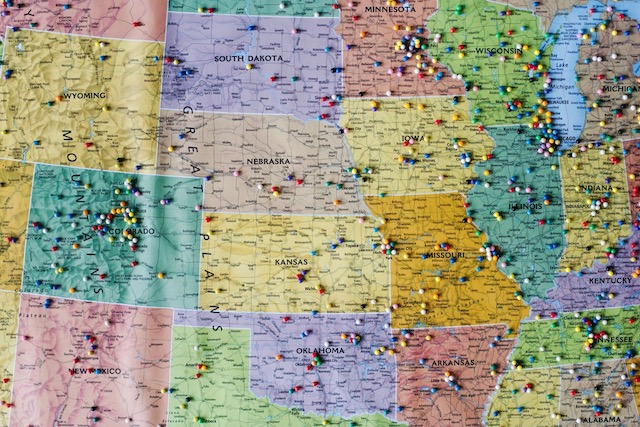How local sales tax requirements impact compliance
by November 20, 2025
In the US, sales tax is governed at the state level. Each state determines its own state-wide sales tax rate, taxability rules, and filing procedures. However, on top of state sales tax rates, municipalities and jurisdictions also impose local sales tax requirements, which also impact sales tax compliance for businesses.
Understanding the role of local and state regulations
States dictate their own laws and guidelines related to what goods and services are considered taxable, the tax rate for these sales, filing requirements for sales tax remittance, and requirements for sales tax permits.
In 2018, the landmark Supreme Court case South Dakota v. Wayfair set a precedent that transformed sales tax compliance and obligations for businesses. This decision allowed individual states to create laws requiring remote sellers that generate sales in a state to collect sales tax in that state, regardless of a physical presence. As a result, 46 states have created economic nexus laws requiring businesses that meet a revenue or transaction (or both) threshold to collect and remit sales tax.
Physical and economic nexus laws
Both physical and economic nexus establish a sales tax obligation in any state. However, every state has its own definition of both types of nexus. For this reason, businesses must understand the physical and economic nexus laws in any (and every) state where they sell taxable goods or services.
TaxJar offers state sales tax guides designed to provide businesses with an overview of physical and economic nexus laws, outlining economic thresholds for each state. These guides also provide insight into which goods and services are taxable, details on the statewide tax rate, and steps for applying for a sales tax permit. However, it’s the responsibility of every business to understand their unique sales tax obligations.
Sales tax sourcing rules
One of the first things businesses should determine is if your business is located in an origin-based state or a destination-based state. This will determine the sales tax rate you charge customers in your home state, or the state where your business is located.
If your business is located in an origin-based state, you should charge all customers in your state the rate for where your business is located. That rate could include a combination of state, county, city, and district tax rates.
While it’s the easier of the two sourcing rules, there are not many origin-based states. Most states follow the destination-based system. In destination-based states, the correct sales tax rate is based on where the buyer is located (the destination of the sale). The reason this can be more confusing than origin-based states is that states can have hundreds of tax jurisdictions, meaning you could potentially have to charge hundreds of different tax rates.
Sales tax sourcing only applies to sales made within your home state. States apply different rules to remote sellers. If you are collecting sales tax on sales outside your home state, you’ll likely charge sales tax at the buyer’s address, similar to destination-based sourcing rules.
Navigating sales tax rates per jurisdiction
E-commerce businesses with nexus in multiple states must understand the state, county, and jurisdictional sales tax rates for each state where they have sales tax obligations. With over 13,000 taxing jurisdictions in the US, it’s a challenge for e-commerce businesses to manually manage compliance. In some states, there could be hundreds of jurisdictions that each have unique tax rates.
State taxing authorities offer information or tools for researching jurisdictional and county sales tax rates. Additionally,TaxJar provides a sales tax calculator that helps businesses understand the total sales tax rate for each buyer’s location, providing tax rate breakdowns by the state, county, and jurisdiction. For businesses that want to automate these calculations, TaxJar’s sales tax API applies rooftop-accurate rates, which means that sales tax calculations are based on your customer’s state, county, city, and even district in real-time.
Manually managing this sales tax process can lead to time burdens for finance teams or business owners, decreasing profitability and productivity. That’s why it’s crucial to consider an automated solution to navigate your business’s unique needs.
How and why rates vary
Jurisdictional and municipal sales tax rates vary for a number of reasons. Local ballot measures may impose sales tax increases that help finance public schools or other publicly-funded services (like a fire protection district). Some municipalities may have higher tax rates to offset other costs and services.
In addition, counties may also impose sales tax increases that provide additional funding for services or public venues. Many areas that are renowned for their highly accredited public schools may have much higher sales tax rates, as sales tax serves as a funding source for the district.
Strategies for managing rate changes
Businesses must remain vigilant in navigating sales tax rate changes in states where they have sales tax obligations. Businesses that manually manage their sales tax compliance must constantly research any sales tax rate updates in the states they have nexus and update these rates in their accounting software immediately.
The simplest method for managing sales tax rate changes is to utilize automated sales tax software like TaxJar. TaxJar automatically updates rates, ensuring businesses always assess the correct tax rate on every sale (in every jurisdiction). These automatic updates minimize errors and streamline the sales tax process, decreasing the risk of noncompliance or a sales tax audit.
Collecting, remitting, and reporting local sales tax
After businesses collect sales tax, they must file a sales tax return and remit taxes to the appropriate sales tax authority on a monthly, quarterly, or yearly basis. State sales tax returns require businesses to identify total sales by location. All sales tax payments remitted to the state should also include any applicable county and city (jurisdictional) tax payments. The state taxing authority distributes these local payments to the appropriate local governments
How to ensure accurate remittance practices
With so many jurisdictions (and counties) to manage, calculating and remitting accurate payments can become complicated very quickly. Businesses need to keep detailed sales records; these records are crucial when remitting sales tax payments to the state, providing the necessary financial information if the business is audited.
Avoiding local sales tax compliance pitfalls
Errors and mistakes related to collecting, remitting, and filing sales tax could lead to financial and legal stress and consequences. Businesses need to be aware of some of the most common errors and sales tax issues; understanding and identifying these issues and errors can help businesses avoid them.
Common errors affecting local sales tax compliance
The most common issues that lead to sales tax compliance troubles for businesses include:
- Failure to understand economic nexus requirements: If you aren’t monitoring economic thresholds as you grow, your business could become noncompliant.
- Remitting late sales tax returns and payments: Businesses must research sales tax filing frequency, otherwise they risk penalties, late fees, and interest charges for any missed filings.
- Exemption certificate confusion: Businesses may be able to purchase specific items without paying sales tax in certain scenarios. These exemptions are specific to each state, so failing to pay sales tax on an item (or failing to assess sales tax on a required good or service) could lead to financial issues down the road.
- Not understanding which goods and services are taxable: Businesses must understand which goods and services are subject to sales tax in each state.
- Not reporting all sales: Failing to keep accurate sales records may leave your business on the hook for any unpaid sales taxes and open you up to a potential audit. Keep detailed records of every sale, preserving receipts and all transactional data.
- Underpaying taxes: If a business consistently seems to underreport sales, returns may be scrutinized, and the business may be at risk for an audit. In addition, failing to assess local taxes can also result in an underpayment and lead to fines or other issues.
- Not updating sales tax rate changes: Businesses must stay aware of all local and state sales tax rate changes. California alone had 100 district sales tax rate changes in 2025. Failure to update tax rates can lead to owing additional taxes (plus any applicable interest, penalties, and other charges).
The importance of regular audits
When businesses need to manage multiple tax rates across numerous states (and individual jurisdictions within each state), conducting regular internal audits are a good idea to ensure accuracy and sales tax compliance.
Ideally, you should audit your sales tax methodologies annually. However, biannual or quarterly audits may be necessary for businesses that struggle with compliance issues or any business that is experiencing growth to new states or expanding their product lines.
Audits should review and assess all tax compliance processes, from record keeping to tax filing and remittance.
Consequences of noncompliance
Sales tax noncompliance has far-reaching financial, legal, and operational consequences. Noncompliance can lead to state taxing authorities auditing the business, imposing steep fines, or reputational issues.
Local sales tax deductions and exemptions
Each state determines which goods and services are subject to sales tax . While most physical goods are taxable, there are notable exemptions such as grocery items, medicine, or clothing under a certain price. However, these exemptions vary by state.
Understanding exemptions by state
Every state has different exemptions and businesses need to research the exemptions in their state, but common examples include:
- Medicine
- Professional services (like accounting, legal, etc.)
- Menstrual products
- Groceries
- Utilities (like water, natural gas, and electricity)
Again, it’s important for businesses to understand exemptions in every state in which they operate or provide sales. Never assume a good or service is exempt from sales tax just because another state deems it exempt.
How sales tax automation improves local tax compliance
Managing sales tax compliance across numerous states (and hundreds of jurisdictions) should not add stress, time, or frustration for businesses. Sales tax automation software like TaxJar can streamline every step in the sales tax process, freeing up time, adding peace of mind, and protecting the financial bottom line.
Simplifying and managing accurate rates
TaxJar implements updated state and local sales tax rates, ensuring businesses always charge the correct rate on every sale. Don’t spend time researching rates across the state (or beyond); TaxJar reflects the most recent tax rate changes as soon as they take effect.
Streamlined tax filing and payment
Take the guesswork out of filing deadlines and processes, and use TaxJar to file state sales tax returns and remit payment. New businesses getting established in a state can also use TaxJar to simplify the process for registering for a sales tax permit.
Automating the sales tax process is the simplest strategy for staying compliant in every state, managing economic nexus requirements across numerous states, and ensuring accurate and timely filings and payments. Ready to streamline your business’ sales tax compliance? Start a free trial with TaxJar today.








